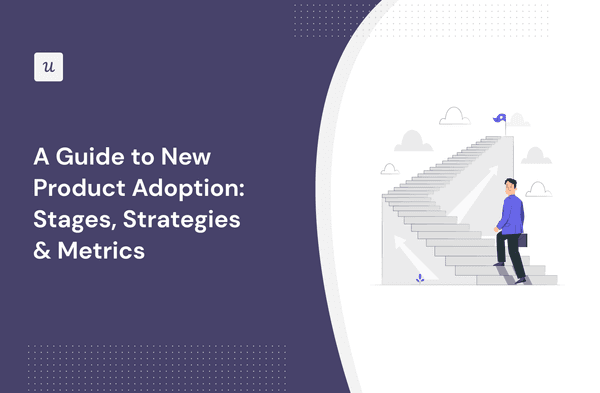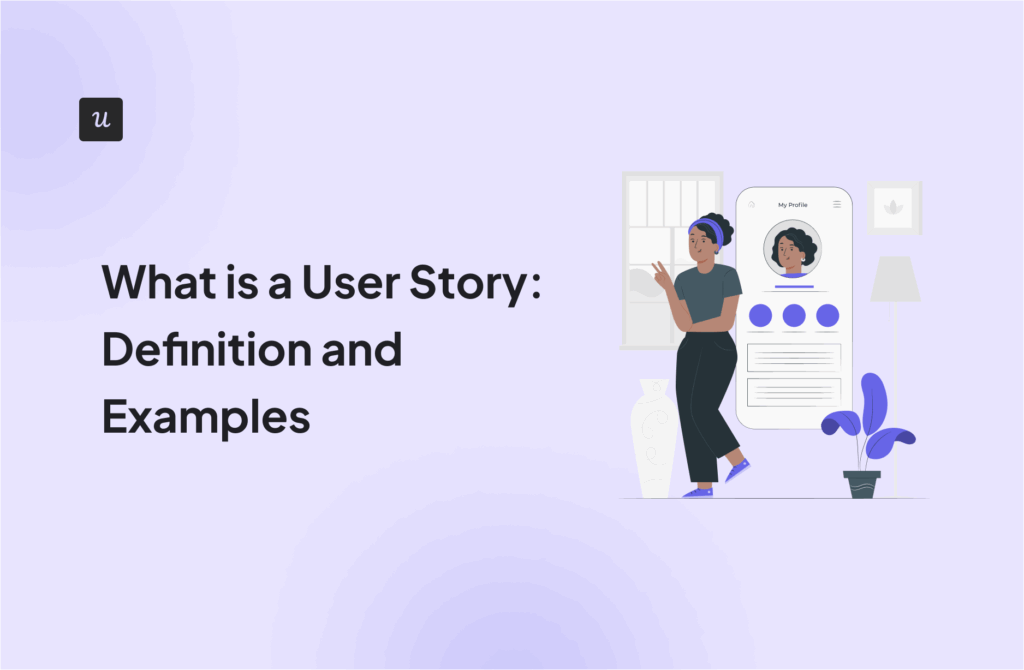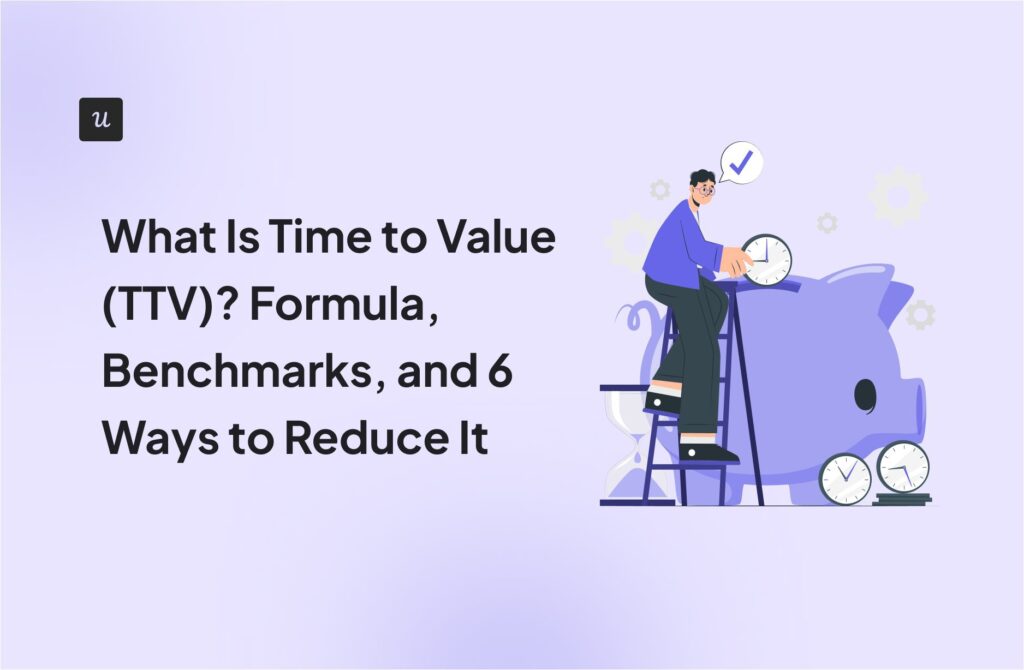
In product development, it’s easy to get caught in a never-ending cycle of building and iterating without achieving growth.
If this sounds familiar, you can’t miss Ben Williams’ presentation, “How to Learn Faster to Grow Faster,” from this year’s Product Drive Summit.
Known as the “product-led geek,” Ben isn’t just another growth expert. He’s a firm believer that the key to sustainable growth lies in relentless learning and experimentation. His approach isn’t about following the latest trends; it’s about gathering data, validating assumptions, and rapidly iterating to achieve real results.
In this article, we dive into the core principles of Ben’s approach, giving you a preview of the actionable insights he delivered in his talk.
Try Userpilot Now
See Why 1,000+ Teams Choose Userpilot

Survival of the fittest in SaaS: How leveraged learning velocity enables growth
In his career as a product coach, Ben has found that high-impact teams share 12 characteristics.
What are they?
LEARNING
The first set of characteristics falls into the learning category. That’s the ability to learn quickly.
Engaging in regular experimentation
Successful growth teams don’t make assumptions — they test everything.
Experimentation becomes their core operating principle, which allows them to collect data, validate hypotheses, and iterate on what they learn. Mind you it isn’t just A/B or multivariate tests, but everything else that uses the scientific method. Like fake door tests.
The gold standard is running eight experiments a quarter, but let’s face it, not all teams have the capacity or skills to do it.
What’s the advice if you’re not at this level?
Ben suggests starting small: “Build some muscle around working this way and go from there. Don’t try to go from zero to 100 miles per hour.”

Proactively gathering user insights
Relying solely on quantitative data can lead to a limited understanding of user behavior. That’s because it doesn’t help you understand the why behind user actions or identify emerging trends.
That’s why top teams actively seek out qualitative insights by speaking with users. By “speaking”, we mean running surveys, conducting interviews and focus groups, analyzing their social media and forum activity, or studying reviews.
This proactive approach helps them stay attuned to evolving needs rather than just reacting to problems as they appear.
We get it: it can be incredibly daunting if you’re not in a habit of doing it.
To ease your team into this kind of research, shadow discovery calls with the product team or invest in user research training.

Consistently analyzing experiment results
Every test — a win or a loss — is a learning opportunity. So, highly effective teams conduct retrospective analyses after every experiment, no matter how small, to ensure they capture all insights.
This part is non-negotiable and yet often gets skipped amidst busy backlogs.
Solution?
Start slowly and deliberately until it becomes a standard part of your work.
Quickly adjusting strategies based on insights
The most successful teams are agile and don’t cling to outdated ideas. If they discover a new insight, they adjust their plan and reallocate resources. Fast.
For example, if user data suggests a feature no longer delivers value, they won’t hesitate to sunset it.
By adjusting strategies swiftly, they stay aligned with current user needs and market trends.
Responding positively to failed experiments
High-performing teams don’t just tolerate failure; they embrace it as an essential part of the learning process.
They conduct blameless post-mortems to find out what went wrong, extract lessons, and apply them to future experiments.
Mind the emphasis on ‘blameless.’ A culture of blame and negativity makes it difficult to learn because people are reluctant to dig deep to find the root cause of failure.
Sharing ideas freely
For innovation to thrive, you need open communication.
High-impact teams actively encourage members to share ideas without the fear of ridicule or judgment — no matter how “wild” they might seem.
By fostering a psychologically safe environment, you can unlock creative potential and drive faster learning cycles.
LEVERAGE
Leverage is the second pillar of Ben’s matrix. That’s the team’s ability to apply the learnings quickly.
Making data-informed decisions
Data is the lifeblood of high-velocity teams.
They use quantitative and qualitative insights to identify growth opportunities, validate the hypotheses, and measure the impact of their efforts. In the best ones out there, eight or more initiatives are informed by data every quarter.
Because, let’s face it, acting on data outperforms guesswork 95% of the time.
In contrast, poorly performing teams just throw spaghetti against the wall to see what sticks. This never works in the long run.
Regularly reflecting on learnings
In high-impact teams, learning isn’t a once-a-quarter exercise.
Instead, they build regular reflection into their routines, for example, as weekly reviews or sprint retrospectives. This allows them to quickly identify what’s working and what’s not. And why.
Proactively sharing learnings across teams
Another habit of successful teams is sharing what they learn with other teams.
This could be through regular performance reports, internal presentations, or automated updates in Slack. For example, at Snyk, Ben’s company, they had weekly impact and learning meetings where they shared their insights.
Transforming learnings into team-wide initiatives
Why is cross-departmental sharing so important?
It creates “a powerful multiplier effect.”
That’s when a successful experiment in one area improves the work of other teams. And by doing so, it accelerates overall growth.
“It’s this cross-pollination of knowledge that’s essential for maximizing the impact of learnings and capitalizing on growth potential.”
How can you know if your organization is such a “unified learning machine”?
For Ben, the gold standard is implementing the learnings from another team within two weeks.
Creating powerful knowledge management systems
Knowledge management systems help teams capture, organize, and retrieve what they have learned.
That’s how best-in-class teams make sure that their learnings don’t get lost, never to be seen again.
Think about it:
If you can’t easily access the information you’ve found in the past, you’re going to make the same mistakes again and again. Or keep reinventing the wheel.
Involving leaders in learning discussions
Finally, the best growth teams have leaders actively involved in the learning process. They don’t preach the importance of learning; they walk the talk.
And we’re talking about a constant, active, in-depth dialogue about their successes and failures. This is something that progress reports can’t match.
Measure your team performance with Product-Led Geek’s learning velocity index
Ben’s Learning Velocity Index is a framework that helps you evaluate your team’s ability to learn and leverage based on the 12 characteristics.
This involves answering 13 questions — 6 for learning, 6 for leverage, and one bonus open-ended question:
- In the past quarter, how many distinct growth experiments or A/B tests did your team run?
- How often does your team proactively seek out direct feedback and insights from your users (e.g., through user interviews, surveys, usability testing) even when NOT prompted by a specific problem or experiment?
- How often does your team conduct a formal review or analysis to understand the results of growth experiments or initiatives, regardless of whether they were successful or not?
- Thinking back to a recent growth experiment that failed, what was your team’s primary response?
- How long does it typically take for your team to adjust their roadmap after identifying a significant learning (positive or negative)?
- Think back to the last time someone on your team shared an idea that was risky, unconventional, or potentially wrong. What was the team’s reaction?
- In the past quarter, how many growth experiments or initiatives were directly informed by insights from user or customer data (analytics, interviews, heatmaps, observational studies etc.)?
- How often does your team meet to review learnings (from experiments, wins, losses)?
- How often do you proactively share your team’s growth learnings with other relevant teams (e.g., other growth teams, product, marketing, sales)?
- Following a successful growth experiment or initiative, on average, how quickly do other teams implement the key learnings from that success (e.g., a core product team productizing a growth experiment, or a CS team changing their health scoring and approach based on learnings about retention)?
- Which of the following BEST describes your team’s approach to capturing, organizing, and retrieving past learnings?
- How often does your team’s leadership (manager, senior stakeholders, etc.) actively solicit and engage in discussions about growth learnings from the team as a whole?
- What is the single biggest obstacle preventing your team from learning faster and leveraging learnings more effectively?
The responses are used to calculate your learning and leverage scores and classify teams into three categories.

Activated learning: The gold standard
These teams achieve the ideal balance of learning and leverage. They generate insights quickly and activate them across their organization for consistently high growth.

Wasted learning: Insights that don’t translate to action
These teams are great at generating insights but struggle to share and implement them. Knowledge often remains siloed. This frustrates team members who feel they’re constantly battling internal obstacles.

Stagnant learning: The seized engine problem
Teams in this category have low scores in both learning and leverage. They lack experimentation, respond slowly to new information, and struggle to generate actionable insights.

Why is creating sustained growth impact SO hard?
Achieving consistent growth impact requires more than occasional wins.
It demands a culture where learning is ingrained in the team’s DNA. This kind of culture doesn’t develop overnight. Breaking down silos, challenging old habits, and building new ones requires ongoing commitment.
Conclusion
Learning —and leveraging what you learn — distinguishes excellent growth teams from average ones. Ben’s presentation sheds light on what exactly this looks like in practice.
If you’d like to learn how Userpilot can help you gather customer data and conduct experiments, book the demo!








